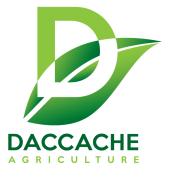“Do not let a drop of water seep into the ocean without benefiting mankind” ~ king Parākramabāhu I of Sri Lanka
Lakes are critical water source in communities, cities, agriculture, and industry in many countries around the world.
In each irrigation area, there is a demand for water and a supply of water. The demand for water varies over time and depends on the types of crops, crop growth stages, and on the climate.
The possibility of supplying as much water to the irrigation area as is needed during each period of the irrigation season depends primarily on the availability of the water at its source, which led to the development of water source management, and the building of reservoir AKA Artificial Lakes.
Artificial lakes dating to the 5th century BC, they have been found in ancient Greece.
There are significant variations in the size of artificial lakes such as big artificial lakes or small pond-like waterbodies, they are more amenable to artificial operation and regulation than lakes. They are fed by precipitation, rainwater that falls directly on the surface of the lake, by water run-off from the adjacent land and small streams, by groundwater that seeps through the soil to the lowest point which is the lake.
Water can be taken from the lake via a polyethylene pipe or steel pipe.
Sometimes, water loss can occur due to natural elements such us evaporation this is why Daccache Company provides a wide range of colored geomembranes, such as white color to reduce the evaporation level due to the heated standard black membrane by sunlight.
Due to the dramatic climatic changes that affect the rainfall average and the groundwater levels are forcing all farmers to think how they can manage to meet their irrigated crops need of water.
The plastic lakes must be isolated to avoid damaging. A metal fence must be erected all around it to prevent a potential entrance of wild animals.
Daccache agriculture provides covers for lakes made of geomembrane (LDPE or HDPE) of various thicknesses from 300 to 3000 micron imported from Europe. Our team is well trained under the German regulations for geomembrane welding to perform in any topographic condition.








